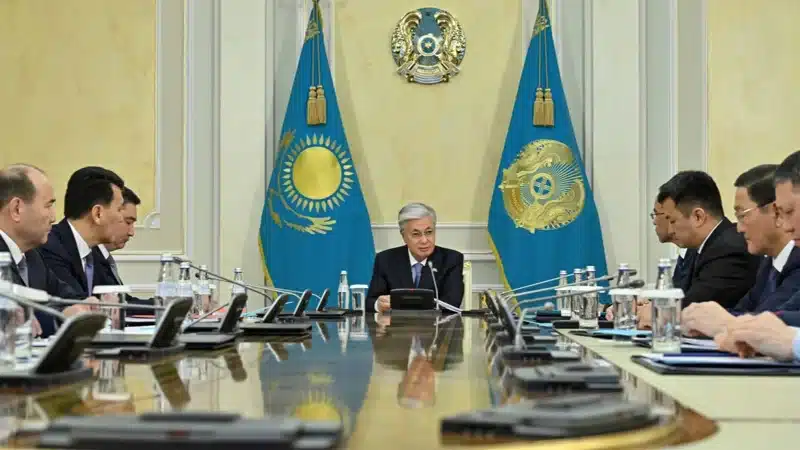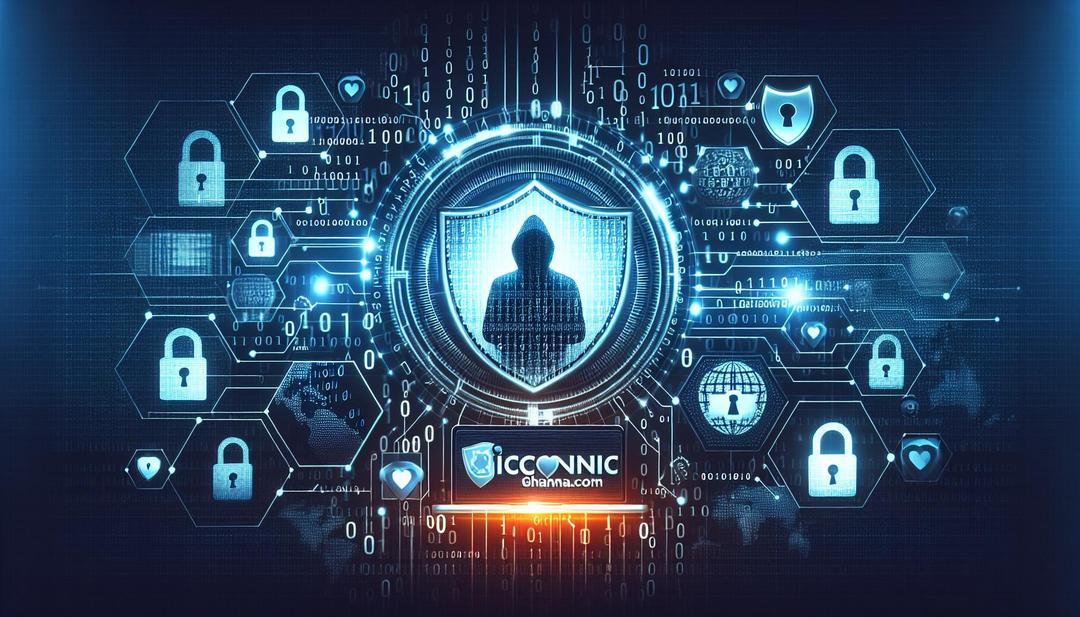Table of Contents
The Kazakh cybersecurity meeting drew national attention as President Kassym-Jomart Tokayev chaired a high-level Security Council session focused on digital resilience across the country.
According to the original article, officials reviewed current threats, government readiness, and safeguards for critical infrastructure. The Kazakh cybersecurity meeting underscored the urgency of keeping government services, energy assets, and financial systems safe.
Kazakh Cybersecurity Meeting: Key Takeaway
- The Kazakh Cybersecurity Meeting set a national mandate to harden critical infrastructure and accelerate incident readiness across public and private sectors.
What Prompted the High-Level Session
Cyber risks have grown in number and intensity, and the Kazakh cybersecurity meeting reflects a broader effort to anticipate and prevent disruptions before they spread. The session aimed to bring political leadership, security agencies, and regulators into alignment on priorities for detection, response, and recovery.
Government digitization, rapid cloud adoption, and expanding connectivity all raise the stakes. The Kazakh cybersecurity meeting focused on keeping essential public services available during attacks, strengthening cooperation with telecoms and banks, and ensuring that citizens have uninterrupted access to trusted services.
Topics on the Table
Leaders examined how to protect power grids, transport hubs, and healthcare systems from ransomware, phishing, and targeted intrusions. The Kazakh cybersecurity meeting explored ways to improve threat intelligence sharing, simplify reporting, and modernize security operations centers so defenders can act quickly.
Officials also discussed skills development, public cyber hygiene, and the role of a national incident response capability. The Kazakh cybersecurity meeting highlighted the need for clear playbooks and tested crisis communications so agencies and companies know who leads, who supports, and how decisions are made when minutes matter.
For example, moving toward a zero-trust architecture can limit lateral movement if attackers get inside a network.
Standards, Governance, and Funding
Global frameworks can guide national programs, and the Kazakh cybersecurity meeting pointed to alignment with internationally recognized practices.
The NIST Cybersecurity Framework is often used to define capabilities for identify, protect, detect, respond, and recover. Adopting consistent standards helps agencies measure progress and gives businesses clarity on expectations.
Workforce planning and sustained investment are essential. The Kazakh cybersecurity meeting emphasized building talent pipelines, expanding training, and funding modern tools for monitoring, logging, and incident response.
Practical guidance, like an incident response playbook inside a SOC, can help teams coordinate during high-pressure events.
International Context and Cooperation
Cybercrime crosses borders, and the Kazakh Cybersecurity Meeting recognized the importance of partnerships with allies, vendors, and international bodies.
Cooperation with law enforcement groups and networks such as INTERPOL on cybercrime can speed up takedowns and evidence sharing, while regional exercises improve readiness.

Regular drills and shared best practices raise resilience across the region. The Kazakh cybersecurity meeting aligns with global efforts to test defenses and rehearse roles in complex scenarios, similar to multinational exercises highlighted in reports like NATO-focused cyber defense events.
Technology Priorities to Reduce Risk
Practical controls often stop the most common attacks. The Kazakh Cybersecurity Meeting elevated identity security, strong authentication, and least-privilege access.
Multi-factor authentication is a baseline protection, and citizens benefit when account recovery is simple and secure.
Industrial networks need particular care. The Kazakh cybersecurity meeting urged improved segmentation between IT and operational technology so attacks on business systems do not jump into the factory floor or grid operations. Sector-specific guidance, such as OT security for industrial control systems, can help engineers and security teams work together.
Implications for Government, Business, and Citizens
The Kazakh Cybersecurity Meeting signals a strategic shift toward integrated defense, where government sets the tone, businesses align with common frameworks, and citizens follow clear guidance.
On the positive side, a unified plan reduces confusion during incidents and makes it easier to share threat indicators in time to block follow-on attacks.
The Kazakh cybersecurity meeting also promotes investment in prevention, which often costs less than cleanup, litigation, and lost trust after a breach. Stronger defenses for hospitals, schools, and utilities translate into safer daily life.
There are tradeoffs to consider. Centralized controls can create bottlenecks if processes become too rigid or slow down decision-making. The Kazakh cybersecurity meeting must balance swift action with transparency and privacy, making sure surveillance powers are limited, audited, and proportionate to risk. Oversight and independent testing will help keep public trust.

Businesses will likely see clearer compliance requirements and support for best practices. The Kazakh cybersecurity meeting may also encourage vendors to certify products against defined standards, which improves quality and reduces integration headaches.
Small and midsize organizations will still need help with cost and staffing, so pooled services and grants can bridge gaps.
For the public, better digital identity, safer online services, and clear guidance on scams will cut exposure. The Kazakh cybersecurity meeting can accelerate public awareness through schools and community programs, teaching people to spot phishing and secure their devices.
Useful explainers on threats, such as DDoS botnets explained, make education more practical and relatable.
Conclusion
The Kazakh cybersecurity meeting establishes momentum for a whole-of-nation approach to defense. Aligning strategy, funding, and training can turn policy goals into day-to-day protection for essential services.
By combining global standards with local accountability, the Kazakh Cybersecurity Meeting can deliver measurable gains in resilience that citizens and businesses will feel in their daily lives.
FAQs
What was the purpose of the Kazakh Cybersecurity Meeting?
- It aimed to coordinate national strategy, improve readiness, and protect critical infrastructure from cyber threats.
Which sectors are a priority?
- Energy, finance, telecom, healthcare, and government services are key focus areas due to their impact on daily life.
How will standards be used?
- Authorities plan to align with global frameworks like the NIST Cybersecurity Framework to guide consistent improvements.
What does this mean for businesses?
- Expect clearer rules, better threat sharing, and practical guidance that helps security teams prevent and respond to incidents.
How are citizens affected?
- Safer digital services, stronger identity protections, and public education campaigns will help people avoid scams and fraud.
Will there be international cooperation?
- Yes, partnerships with regional allies and global law enforcement bodies will support investigations and takedowns.
How can organizations get started?
- Begin with risk assessments, enforce multifactor authentication, and test incident response plans through tabletop exercises.
About the Security Council of the Republic of Kazakhstan
The Security Council of the Republic of Kazakhstan is a constitutional advisory body that coordinates policy across defense, national security, and strategic planning. It convenes senior leaders to evaluate risks, set priorities, and direct cross-government action on urgent challenges.
Working with ministries, regulators, and national security agencies, the Council advances programs that safeguard the country’s sovereignty and public safety. In the context of cyber defense, its guidance helps align public and private efforts, a role that was central to the recent Kazakh Cybersecurity Meeting.
Biography: President Kassym-Jomart Tokayev
President Kassym-Jomart Tokayev is the head of state of the Republic of Kazakhstan and chairs the Security Council. His career includes senior roles in diplomacy and public administration, which shape his approach to international cooperation and national resilience.
As president, he has prioritized economic development, institutional reforms, and the modernization of public services. His leadership during the Kazakh Cybersecurity Meeting reflects a commitment to protecting citizens, strengthening critical infrastructure, and advancing responsible digital innovation across the country.
Further reading on nation-state threats and critical infrastructure risks can be found in resources such as state-sponsored attacks on energy grids, as well as international benchmarks like the Global Cybersecurity Index from the International Telecommunication Union.





